Evan Wakelin uses architectural collages to depict the fragmented identities of migrants
Graduate shows 2016: architecture student Evan Wakelin has produced drawings that juxtapose the old and new homes of migrants in Toronto, to convey the emotional and physical upheaval these people experience (+ slideshow).

Wakelin's thesis research project is part of his ongoing studies at the Daniels Faculty of Architecture, Landscape, and Design, where he is enrolled on the Master of Architecture course.
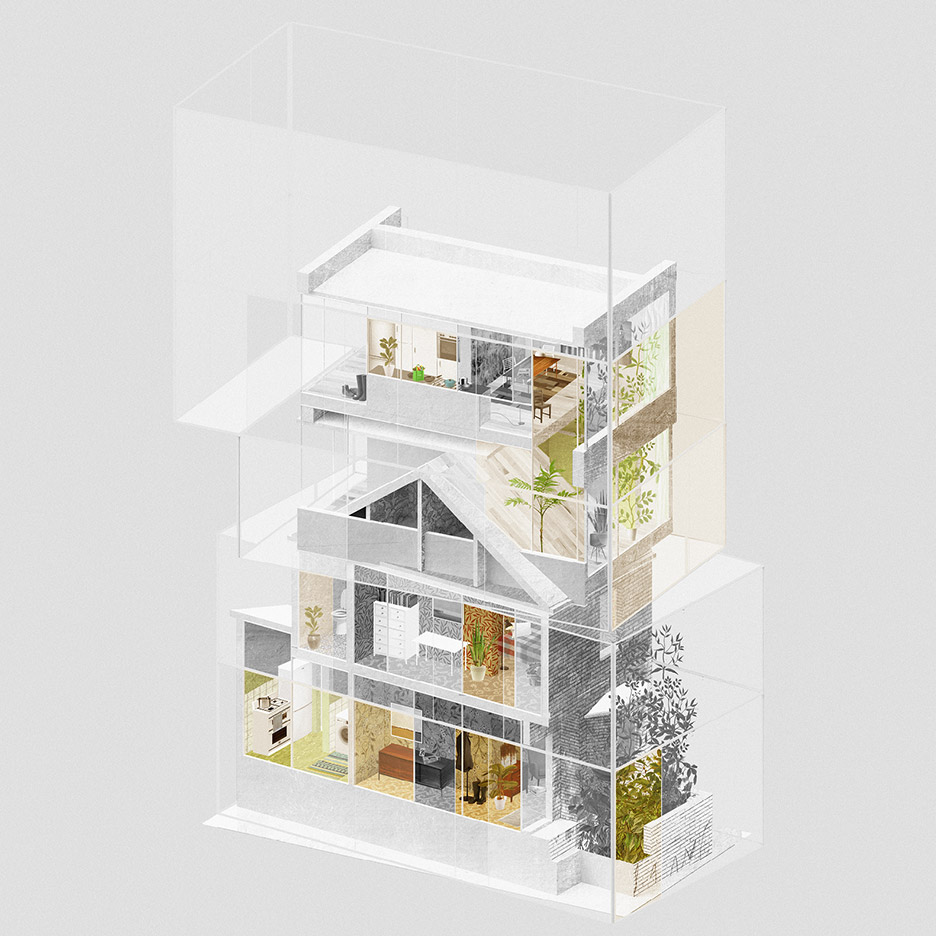
He chose to focus on the issue of immigration and internal migration because of its significance to contemporary life in Toronto and many other global cities.
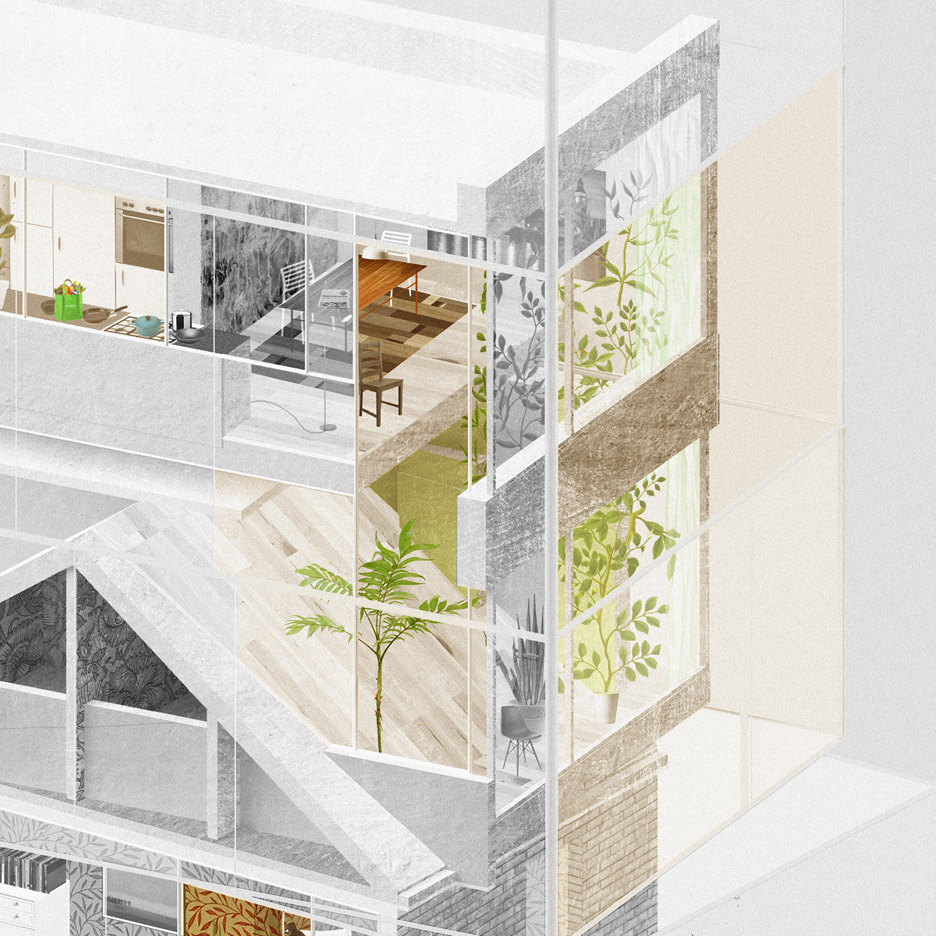
"The drawings illustrate hypothetical migrations to the city, whereby the original home of the migrant is layered with their current home within the city of Toronto," explained Wakelin in his thesis research paper.
"This intersection of past and present, over different geographical locations, describes a divided identity where the sense of belonging and sentiment exist somewhere in between."
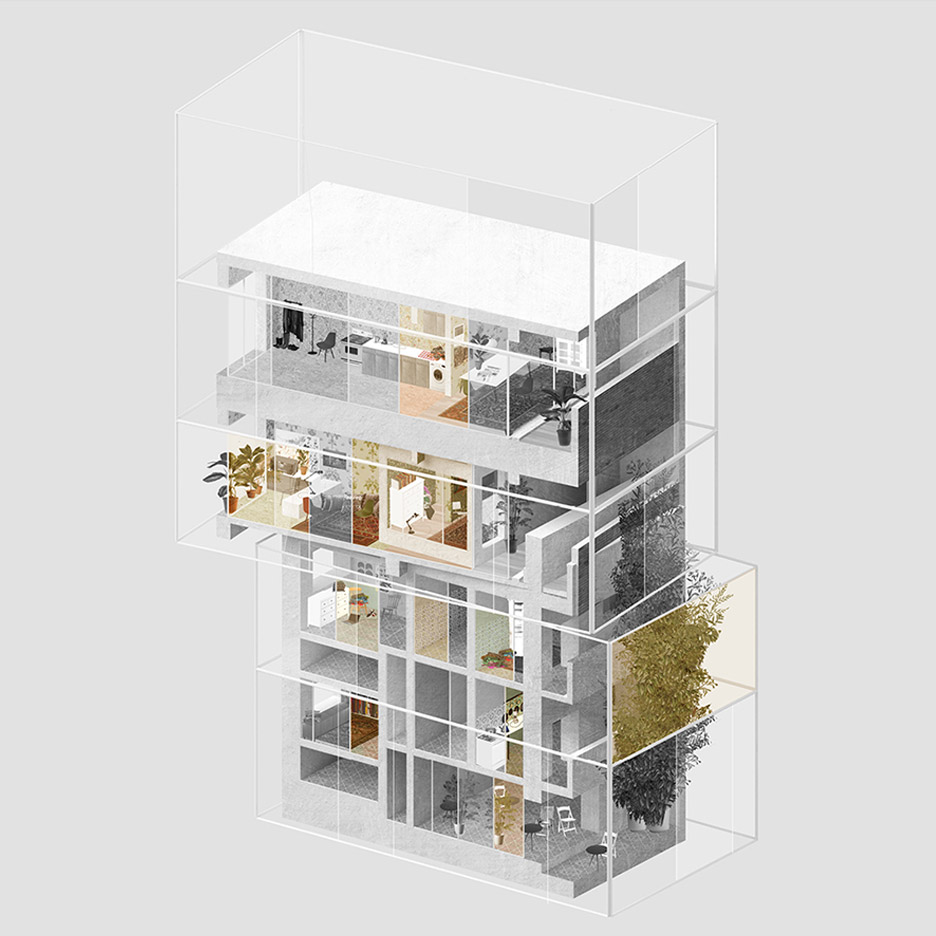
Each drawing combines an image of a standard Toronto housing typology with that of another city. Examples include a detached Vancouver house, a Mumbai apartment, a flat in Damascus and a terraced house in Birmingham.
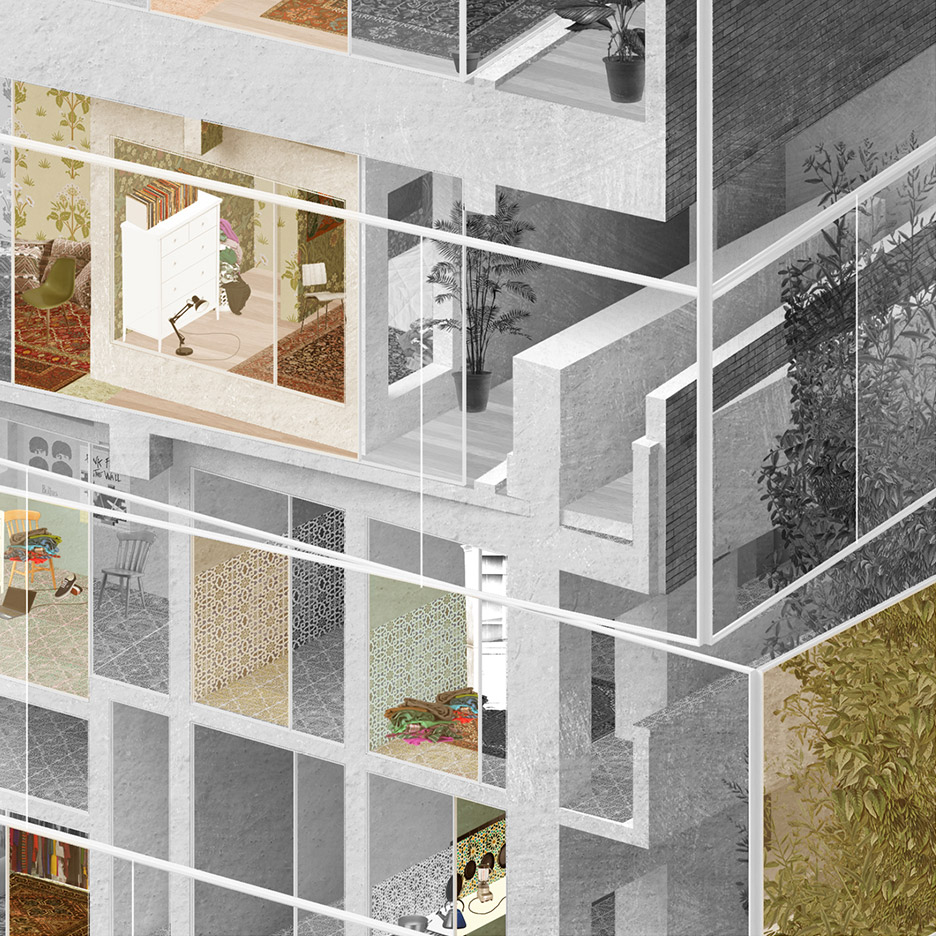
"The drawings suggest not only an intersection of architecture, but one of climate, sound, smell, and taction," Wakelin added.
"The end result is a structure that bridges this fragmentation, a unified sense of home which can exist only within the human mind."
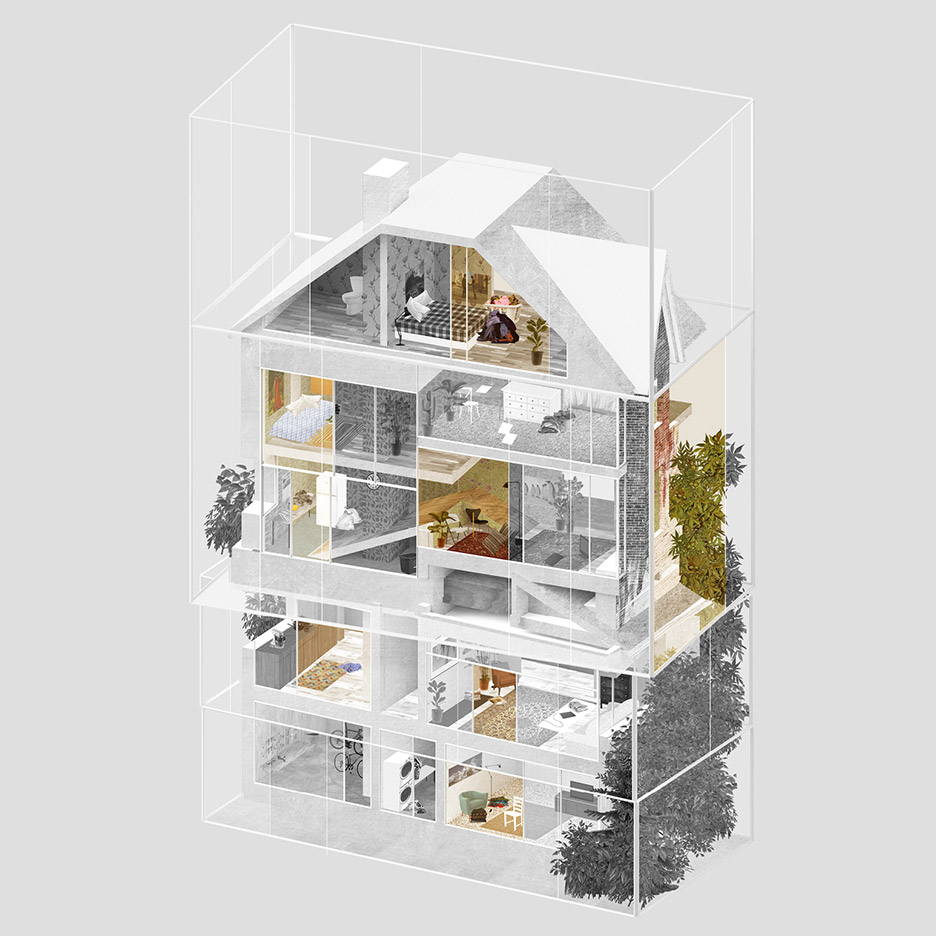
The project aims to explore the personal connection to previous homes that migrants bring with them when they settle in a new place. It is a response to globalisation and the lack of permanence many people experience when they move home often.
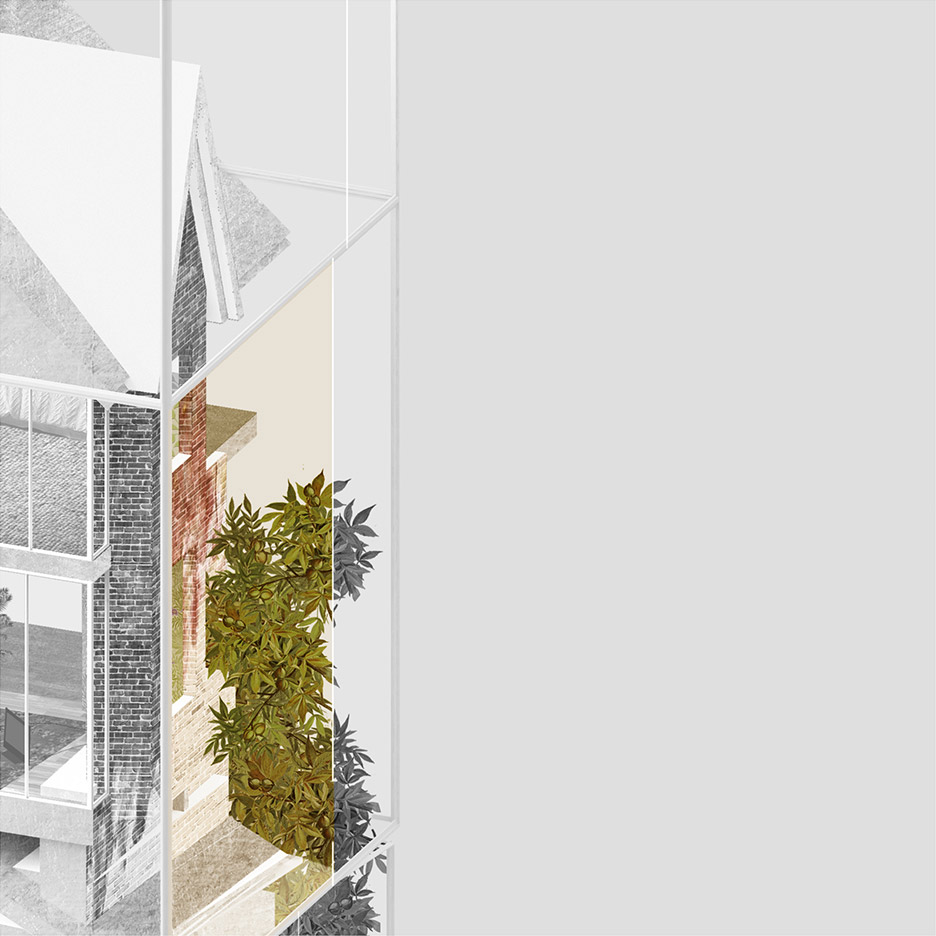
"As people move from one city to the next, they leave behind friends, family, and experiences," Wakelin explained. "However, they remain connected to these places through memory, correspondence, and revisitation."
In the drawings, elements of architecture and interior design that evoke particular residential styles are stacked and presented in section. Like dolls' houses, they offer an insight into the past lives of the occupants.
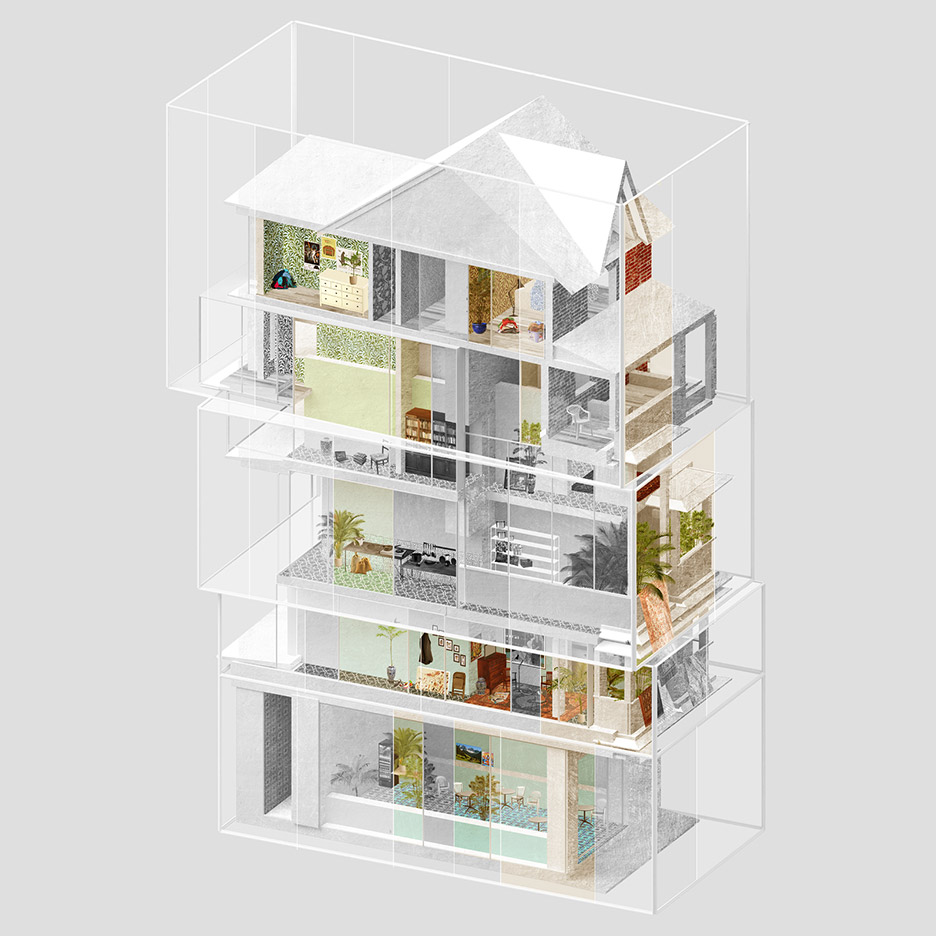
Wakelin has given the project the working title "Sehnsucht", which he said "refers to a German word used to describe a yearning or wistful longing".
The fragmented sense of identity many migrants experience is portrayed in the jumbled arrangement of the spaces, which are contained within stacked cubes intended to represent the containment of familiar sounds, smells and other sensory qualities.
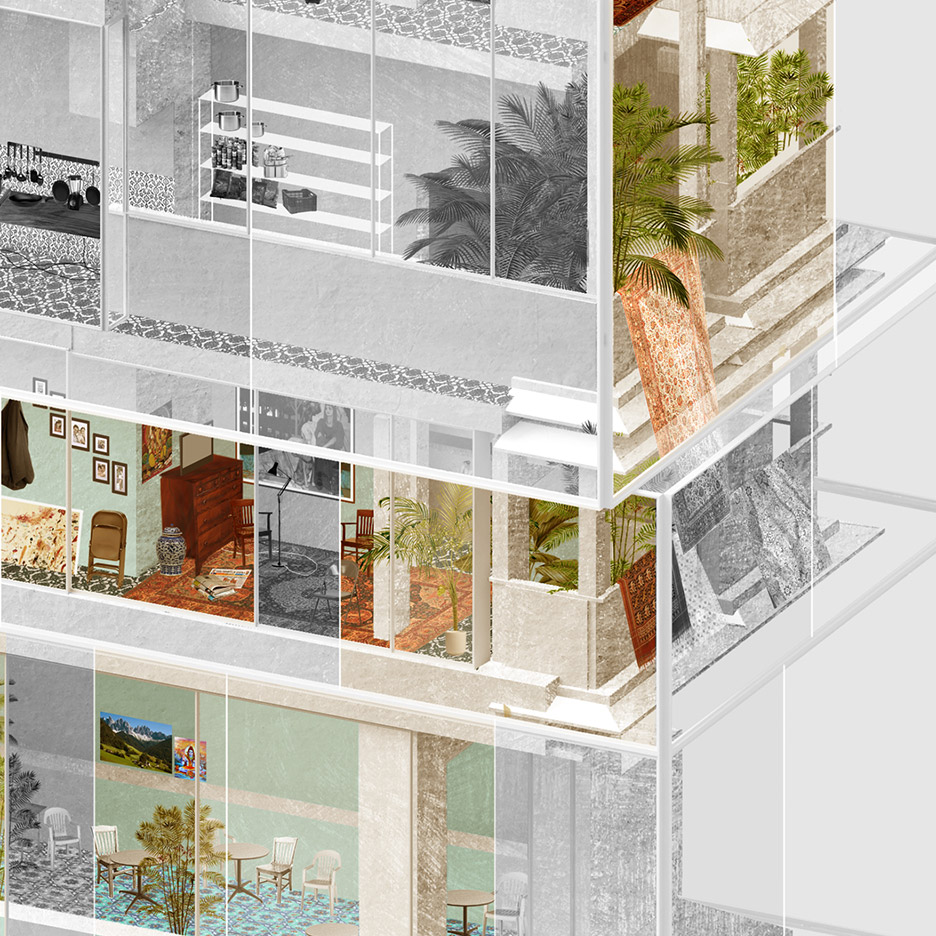
Other examples of architecture students using drawings to represent issues relating to urbanisation include Zhan Wang's depiction of a fictional technotopian port city built to distribute minerals mined from the moon, and Larisa Bulibasa's interpretation of the City of London as a bewildering labyrinth.